

Crafting Your Way To Inner Peace
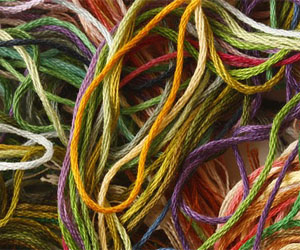
In the hustle and bustle of our modern lives, finding moments of serenity and tranquility can often seem like an unattainable goal. Our world is filled with constant digital distractions, demanding schedules, and a relentless pace that leaves little room for peace. However, there's a timeless remedy that can help you find solace in the midst of life's chaos: the art of handmade creations. Handmade serenity is more than just a concept; it's a path to inner peace that you can craft with your own two hands.
Creating something with your own hands is a deeply fulfilling experience. Whether you're knitting, painting, woodworking, or engaging in any other craft, the act of crafting brings you into the present moment. It's an escape from the relentless noise of modern life, allowing you to focus on the task at hand and forget about your worries, if only for a while.
Handmade serenity is a form of active meditation. As you immerse yourself in your craft, you enter a state of flow, where time seems to stand still, and you're completely absorbed in the process. This meditative quality of crafting can be profoundly calming and is akin to mindfulness meditation, a practice proven to reduce anxiety and promote mental and emotional well-being.
The tactile nature of handmade creations has a soothing effect on your senses. Feeling the textures, seeing the colors, and manipulating the materials can be a sensory experience that grounds you in the moment. Whether you're kneading dough for homemade bread, shaping clay into pottery, or sewing fabric into a quilt, your senses come alive, enhancing your connection to the world around you.
Moreover, handmade serenity is about the sense of accomplishment that comes with completing a project. Seeing your creations come to life can be incredibly rewarding, instilling a sense of pride and purpose. It's a tangible representation of your creativity and effort, and this feeling of achievement can boost your self-esteem and sense of self-worth.
Crafting also allows you to take control of your surroundings. You can make your home more inviting and cozy with handmade decor, such as quilts, paintings, or handcrafted furniture. These pieces carry a personal touch that can transform your living space into a sanctuary of serenity, providing a refuge from the chaos of the outside world.
Handmade serenity is not just a leisure activity; it's a journey to inner peace. It provides a break from the relentless pace of modern life and allows you to be fully present in the moment. The act of crafting is a form of meditation that brings about a profound sense of calm. It engages your senses, fosters accomplishment, and lets you take control of your surroundings. So, whether you're an experienced crafter or someone new to the world of handmade creations, consider embracing this path to inner peace. Craft your own serenity, one creation at a time, and discover the therapeutic power of crafting for a more peaceful and fulfilling life.
A Blooming Start To Your Green Journey
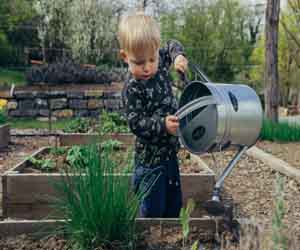 Planning Your Garden
Planning Your Garden
A well-thought-out plan can make gardening more enjoyable and less overwhelming:
Design: Sketch your garden layout and decide where you want to place different plants. Consider factors like plant height, growth habits, and aesthetics.
Plant Selection: Choose plants that are suitable for your climate, soil type, and level of maintenance. Local garden centers can provide helpful recommendations.
Maintenance Schedule: Create a maintenance schedule that includes watering, fertilizing, and pruning. Regular tasks will help your garden flourish.
Essential Gardening Tools
Every gardener needs a basic set of tools:
Hand Trowel: For digging small holes and transplanting seedlings.
Pruning Shears: To trim and shape plants.
Gloves: To protect your hands from dirt and thorns.
Watering Can Or Hose: For proper irrigation.
Garden Rake And Hoe: For weeding and soil preparation.
Caring For Your Garden
The key to a thriving garden is care and attention:
Watering: Be mindful of your plant's water needs. Overwatering can be as harmful as underwatering. Learn to strike a balance.
The Fusion Of Tradition And Innovation
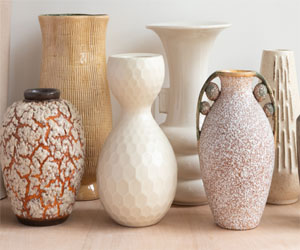 Ceramics, an art form with a history dating back millennia, has taken on new life in the contemporary art world. Contemporary ceramics represent a dynamic fusion of traditional techniques and innovative ideas, resulting in a breathtaking array of artistic expressions. This revitalized craft has garnered international attention and a dedicated following among artists and collectors.
Ceramics, an art form with a history dating back millennia, has taken on new life in the contemporary art world. Contemporary ceramics represent a dynamic fusion of traditional techniques and innovative ideas, resulting in a breathtaking array of artistic expressions. This revitalized craft has garnered international attention and a dedicated following among artists and collectors.
Breaking Boundaries: Contemporary ceramics are marked by a fearless embrace of experimentation. Artists working in this medium are unafraid to push the boundaries of traditional ceramics, often combining clay with other materials such as metals, glass, or textiles. The use of digital technology has enabled artists to design intricate patterns and precise shapes, opening up entirely new possibilities.
Diverse Styles And Themes: One of the most exciting aspects of contemporary ceramics is the diversity of styles and themes explored by artists. From minimalist and functional pottery to abstract and conceptual sculptures, contemporary ceramics encompass a wide range of artistic expressions. Some artists delve into social and political commentary, while others focus on the beauty of the natural world. This diversity reflects the vast creative potential of ceramics in the hands of contemporary artists.
Cross-Cultural Influences: Contemporary ceramics draw inspiration from a global palette. Artists often blend influences from various cultures and traditions, leading to cross-cultural dialogues through their work. Whether it's the fusion of Asian and Western aesthetics or the exploration of indigenous techniques, contemporary ceramics are a testament to the interconnectedness of art across borders.
Crafting Creativity And Fulfillment
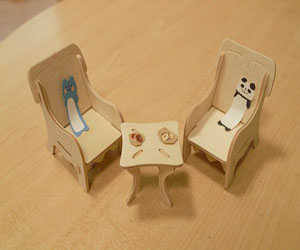 Sense Of Accomplishment: There's a profound sense of accomplishment that comes with completing a woodworking project. The act of seeing your vision take shape, from the initial design to the final finished piece, is incredibly rewarding. It builds confidence and self-esteem, and each project serves as a tangible testament to your skills and dedication.
Sense Of Accomplishment: There's a profound sense of accomplishment that comes with completing a woodworking project. The act of seeing your vision take shape, from the initial design to the final finished piece, is incredibly rewarding. It builds confidence and self-esteem, and each project serves as a tangible testament to your skills and dedication.
Learning And Growth: Woodworking as a hobby is a journey of continuous learning and growth. It's an opportunity to acquire new skills and techniques, from mastering joinery methods to understanding different types of wood. The learning curve is steep, but the journey is part of the joy, as you gradually progress from simple projects to more complex creations.
Customization And Personalization: One of the most appealing aspects of woodworking as a hobby is the ability to customize and personalize your creations.
A Time-Honored Craft With Modern Relevance
 Connection To Tradition: Needlework connects us to our cultural heritage. Many techniques and patterns have been passed down through generations, preserving age-old traditions. This connection to tradition adds a layer of historical richness to the craft.
Connection To Tradition: Needlework connects us to our cultural heritage. Many techniques and patterns have been passed down through generations, preserving age-old traditions. This connection to tradition adds a layer of historical richness to the craft.
A Sustainable Hobby: Needlework is often sustainable and eco-friendly. Crafters can create practical, long-lasting items that reduce the need for disposable, mass-produced alternatives. This aspect of needlework aligns with a modern focus on sustainability and eco-conscious living.
Versatility: Needlework can take on various forms and serve diverse purposes. From functional items like clothing, home decor, and accessories to fine art and wall hangings, the versatility of needlework allows for a wide array of projects.
To explore the world of needlework and incorporate it into your life, consider the following steps:
Choose Your Craft: Start by selecting a specific form of needlework that resonates with you. Whether it's embroidery, cross-stitch, knitting, or crochet, choose a technique that aligns with your interests and goals.
Gather Materials: Acquire the necessary materials, such as fabric, thread, needles, and any other specific tools related to your chosen craft. High-quality materials can greatly enhance the final result.
Elevating Ambiance And Well-Being In Your Space
 Fragrance Selection:The heart of any scented candle design is the fragrance. It sets the tone and evokes specific emotions. Whether you prefer the calming scent of lavender, the invigorating aroma of citrus, or the warmth of vanilla, the choice of fragrance is a crucial step in design. It's about more than just smell; it's about creating an ambiance that resonates with your space and your mood.
Fragrance Selection:The heart of any scented candle design is the fragrance. It sets the tone and evokes specific emotions. Whether you prefer the calming scent of lavender, the invigorating aroma of citrus, or the warmth of vanilla, the choice of fragrance is a crucial step in design. It's about more than just smell; it's about creating an ambiance that resonates with your space and your mood.
Wax And Color: The choice of wax and color is another essential aspect of design. The wax type can influence the candle's texture and burn time. Different colors can evoke different feelings. Soft pastels for a serene atmosphere, bold hues for a dramatic touch, or earthy tones for a cozy and grounded environment. The color should complement the chosen fragrance and the intended ambiance.
Container And Packaging: The vessel that holds the scented candle is more than just a practical element; it's a design statement. Containers come in a variety of shapes, sizes, and materials, from glass jars to tin cans, and even ornate ceramic pots. The packaging, including labels and boxes, can add a layer of elegance and sophistication to the overall design.
Wicks And Flames: The wick's size and type can influence how the candle burns and distributes the fragrance. Double-wicked candles can create a more intense scent release, while single wicks are ideal for a subtler ambiance. The design extends to the flame itself; many scented candles offer an aesthetic touch with wooden wicks that crackle gently as they burn.
Nurturing Mind And Body
 Crafting also enhances cognitive abilities. It stimulates your brain and challenges it in new and exciting ways. Whether you're following a knitting pattern or solving a design problem in woodworking, crafting requires problem-solving skills, spatial awareness, and attention to detail. Over time, these mental exercises can help sharpen your mind and keep it agile.
Crafting also enhances cognitive abilities. It stimulates your brain and challenges it in new and exciting ways. Whether you're following a knitting pattern or solving a design problem in woodworking, crafting requires problem-solving skills, spatial awareness, and attention to detail. Over time, these mental exercises can help sharpen your mind and keep it agile.
Furthermore, crafting encourages mindfulness. When you're deeply immersed in a creative project, you enter a state of flow, where you lose track of time and are completely absorbed in the task. This meditative quality of crafting can be profoundly calming and is akin to the practice of mindfulness meditation, which has been proven to reduce anxiety and improve mental health.
The sense of accomplishment that comes with completing a craft project can boost self-esteem and self-worth. Seeing your creations come to life can be incredibly rewarding, instilling a sense of pride and purpose. Crafting can also provide a platform for social interaction, as it is often enjoyed in groups or shared with friends and family.
A Timeless Connection
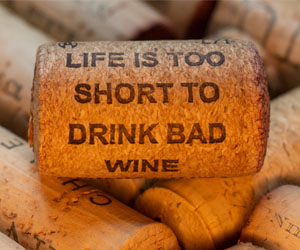 The Romans, too, played a pivotal role in the history of wine. They expanded vine cultivation across their vast empire, introducing new techniques in viticulture and winemaking. The famous phrase "in vino veritas" (in wine, there is truth) emerged from Roman culture, emphasizing the way wine could loosen tongues and reveal one's innermost thoughts.
The Romans, too, played a pivotal role in the history of wine. They expanded vine cultivation across their vast empire, introducing new techniques in viticulture and winemaking. The famous phrase "in vino veritas" (in wine, there is truth) emerged from Roman culture, emphasizing the way wine could loosen tongues and reveal one's innermost thoughts.
Medieval Monasteries: Throughout the Middle Ages, wine remained a significant part of European culture. Monasteries became centers of wine production and preservation. Monks carefully cultivated vineyards and perfected the art of winemaking, leading to the creation of some of the world's most renowned wine regions, such as Bordeaux and Burgundy.
Exploration And Trade: As European explorers set out to conquer new lands, they brought vines with them to cultivate wine in their new colonies. Wine became a valuable trade commodity, driving exploration and colonization. Spanish missionaries, for instance, planted vineyards in California, paving the way for the Napa Valley wine region.
Modern Times: In more recent history, the 19th and 20th centuries witnessed significant advancements in winemaking techniques and the establishment of regulations governing the production of wine. Winemakers like Louis Pasteur made groundbreaking contributions to the science of fermentation, ensuring the consistent quality of wine.
Today, wine is produced and enjoyed on a global scale. Wine regions span the world, from the vineyards of France and Italy to the emerging wine industry of New Zealand. Wine continues to be a symbol of celebration, sophistication, and the finer things in life.